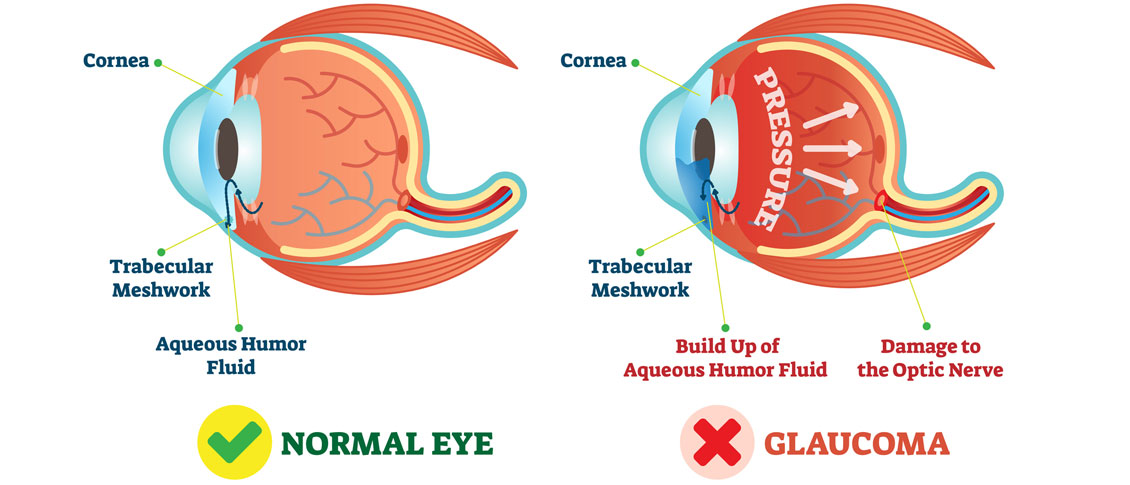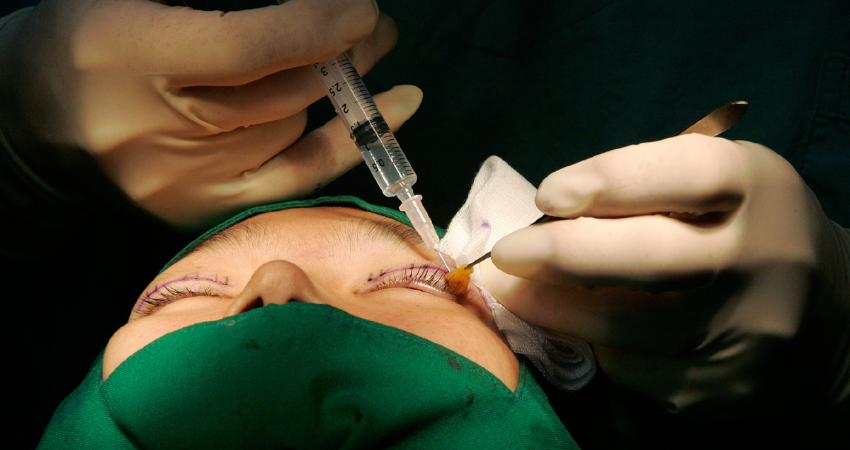- Email: Akshareye22@gmail.com
- 241, Royal Arcade, Sarthana Jakatnaka, Surat-395006
- Call: 8866342242
Glaucoma Diagnosis and Treatment
- Home
- Glaucoma Diagnosis and Treatment
- Computerised Eye Testing
- Stitchless Phaco Cataract Surgery (MICS) with Premium IOL
- Surgery for Spectacle Removal (C-LASIK, Blade free LASIK, ICL)
- Eyelid Surgery
- Dry Eye Management
- Keratoconus Management (CXL, Contact Lens)
- Diabetic Retinopathy Treatment
- Glaucoma Diagnosis and Treatment
- Treatment of Blocked NLD
- Pteygium surgery using advanced fibrin glue
- Punctal plug placement for DRY eye
- Probing for watering in neonat
Glaucoma Diagnosis and Treatment

Introduction: Glaucoma encompasses a group of eye conditions that damage the optic nerve, often due to increased intraocular pressure. Early diagnosis and management are vital to prevent irreversible vision loss.
Symptoms: Symptoms may not be noticeable until significant nerve damage occurs, but can include peripheral vision loss, blurred vision, and eye pain.
Causes: Increased intraocular pressure damages the optic nerve. Risk factors include family history, age, and certain medical conditions.
Treatment: Management typically involves medications (eye drops) to lower intraocular pressure, laser treatments to improve drainage, and surgical options to reduce pressure or improve fluid outflow.
Akshar Eye Hospital
- Computerised Eye Testing
- Stitchless Phaco Cataract Surgery (MICS) with Premium IOL
- Surgery for Spectacle Removal (C-LASIK, Blade free LASIK, ICL)
- Eyelid Surgery
- Dry Eye Management
- Keratoconus Management (CXL, Contact Lens)
- Diabetic Retinopathy Treatment
- Glaucoma Diagnosis and Treatment
- Treatment of Blocked NLD
- Pteygium surgery using advanced fibrin glue
- Punctal plug placement for DRY eye
- Probing for watering in neonat
Eyelid Surgery

Introduction: Eyelid surgery, or blepharoplasty, is a procedure designed to improve the appearance and function of the eyelids. It can address issues such as drooping eyelids, excess skin, or puffiness.
Symptoms: Common reasons for considering eyelid surgery include drooping upper eyelids that may obstruct vision, sagging lower eyelids, or visible under-eye bags.
Causes: These issues can be caused by aging, genetics, or trauma, leading to changes in the skin and muscle of the eyelids.
Treatment: The surgery involves removing excess skin, fat, or muscle from the eyelids to correct functional impairments and enhance appearance. The procedure can be performed on the upper or lower eyelids and aims to rejuvenate the eye area and improve overall vision if the drooping is affecting sight.
